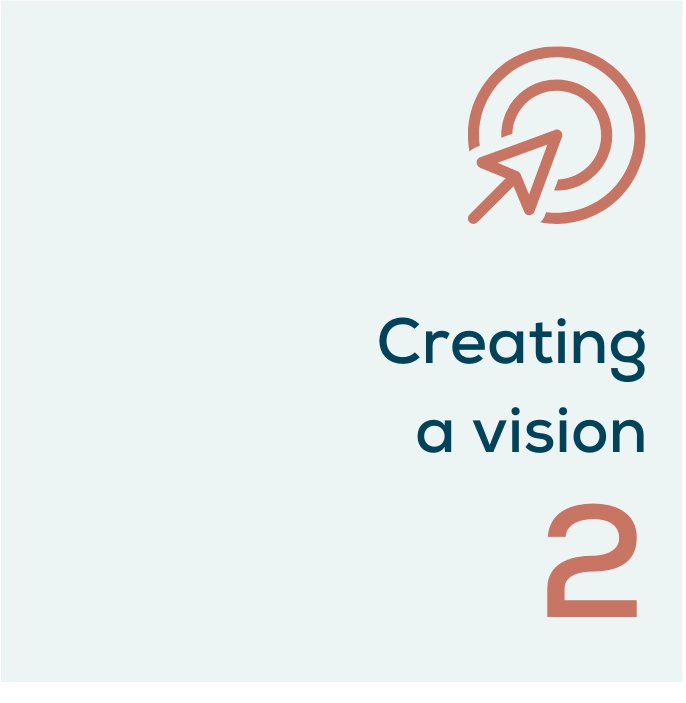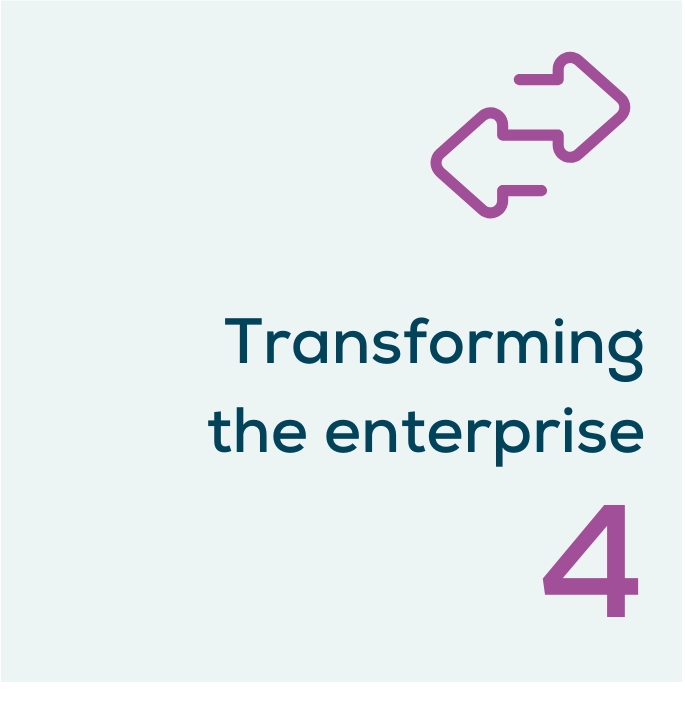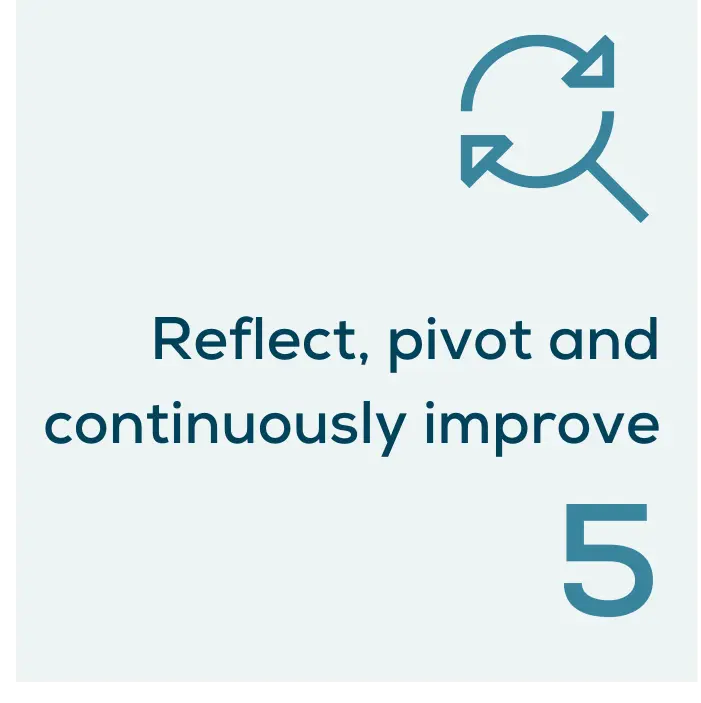
The Enterprise Transformation Journey
Every enterprise’s transformation journey is unique but follows a common path. DASA provides a tailored, straightforward approach to navigate this journey, focusing on five key phases to meet your specific needs.
Embracing Agility, DevOps, and Lean Principles
Adapting and Excelling in a Digitally Disrupted World
We live in a digitally disruptive world. Leaders of enterprises are continuously exploring ways to respond to – or better even, benefit from – the increasing volatility, uncertainty, complexity, and ambiguity their businesses are facing.
Over the past decade, the search from enterprise resilience and ultimate search for good flow has triggered many leaders to embark on what is often called an enterprise transformation or digital transformation.
Most enterprise-wide digital transformations are based on one or more key principles from the Agile, DevOps, and Lean world. For example by forming Scrum teams, eliminating waste in key processes and by automating the software delivery lifecycle through the construction of CI/CD pipelines.
Many enterprises have gained quite some success in following such a journey, and many have embraced some or all of DASA’s DevOps Principles, that are extremely relevant up until this day. But more often than not, they become stuck not that far into the transformation.
Transforming an enterprise is tough and requires perseverance, grit, commitment, and agility throughout the journey. DASA has proven to be a ‘go-to-partner’ for many enterprises worldwide. As an industry body DASA guides organizations and its leaders to become Digital Winners.



Phase 1
Feeling the Sense of Urgency
Various key triggers can initiate a transformation, often stemming from a sense of urgency. In many instances, enterprise leaders, understanding their business and context, including existing challenges, market risks, and potential unforeseen events, recognize the need for change. Inspiration for grasping the urgency of this change can come from attending events, reading articles, or engaging with peers.
DASA’s communities and extensive body of knowledge significantly aid in this phase. Its comprehensive knowledge base not only inspires leaders and professionals but also heightens their awareness of the urgency for future transformations. DASA continuously gathers insights on industry and business-specific challenges, offering tailored guidance for enterprises based on their unique challenges and opportunities.
Enterprise leaders can engage with DASA through various channels. They can participate in webinars, listen to podcasts, attend events, and access DASA’s freely available vision papers and whitepapers. These resources often act as a catalyst, enlightening leaders about the significance of initiating and leading a transformation.
For its members, DASA offers additional talent and guidance products valuable at this stage, including discovery workshops and the Digital Readiness Assessment. Utilizing these tools can broaden the scope and enhance the impact of the transformation process.
Phase 2
Creating a Vision
Focusing on the ‘Why’ behind a transformation is crucial. At this stage, a leader begins by crafting a vision, often through brainstorming, discussions, and workshops with management teams and peers. They might also seek insights from consultants and coaches, aiming to gather ideas from as many sources as possible.
A valuable resource for inspiration can be the DASA whitepapers. These documents highlight the necessity of digital transformation and the construction of High Performing Digital Organizations, offering initial guidelines for what such a transformation might entail. Additional sources include participating in DASA’s leadership community, listening to podcast episodes from ‘Leaders in Transformation‘, attending DASA’s events (both physical and virtual), and exploring case studies available on the DASA website.




Phase 3
Shaping the Transformation
When a clear vision is established, the next step is designing the transformation in detail. For many leaders, this stage can be daunting. Skipping this step and jumping into action is not advisable.
The transformation process requires meticulous planning and identification of key success factors. Essential steps include forming a dedicated transformation team, defining their working methodology, managing stakeholders, budgeting, setting up metrics to track progress, establishing key objectives and results, and crafting a robust communication strategy. Selecting an appropriate organizational change management approach is also crucial to navigate through the change phases effectively, preparing for resistance and unexpected challenges.
During this phase, understanding how to prepare for and manage a successful transformation is critical. Utilizing DASA’s talent and guidance products can help structure thoughts, comprehend all aspects of the transformation, and make informed decisions in shaping the design and roadmap for the transformation.
Phase 4
Transforming the Enterprise
This is the implementation phase, the crux of the transformation. It involves multiple, specifically tailored interventions, both small and large, to achieve the desired target state. Transforming an enterprise is a significant undertaking, often spanning months or years, not days or weeks.
There are no universal solutions or quick fixes. It’s crucial to choose transformation interventions that align with the current state and future goals of your enterprise. The implementation approach for each intervention also varies based on your organizational context.
DASA offers a wide range of talent and guidance products, accommodating all frameworks and models, making them suitable for organizations of any type, size, and maturity level. DASA’s portfolio, drawing from leading methods and frameworks in DevOps, Agile, Lean, Cloud, SRE, digital transformation, and leadership development, focuses on the essential ‘wiring’ needed to transform your enterprise into a high-performance digital organization.
DASA’s portfolio addresses all six digital transformation themes, providing insights and solutions for enhancing your enterprise’s capabilities in ‘People & Culture’, ‘Structure, Processes & Governance’, and ‘Architecture & Technology’.
- Growing and developing the next generation of digital leaders
- Creating a culture of high performance
- Wiring the enterprise for flow and value maximization
- Building high-performance software teams
- Simplifying the technology landscape
- Modernizing IT operations & infrastructure




Phase 5
Reflect, Pivot and Continuously Improve
This last phase might not be seen as a separate phase, and instead is more of a mindset and attitude towards transformation. While transformations should be managed and run as programs, at the same time the enterprise is never ‘done’ with transformation.
Adopting a continuous improvement mindset and ensuring that leaders and professionals alike reflect often about the impact the transformation has had, new insights, challenges or opportunities, greatly helps in creating a growth mindset and ensuring that the enterprise will become a better version of itself every day.
A transformation journey can be visualized using the analogy of climbing a mountain. During the journey various challenges will emerge. The road will not be linear in fashion, but instead will lead through small, and sometimes difficult to plan events to reach the various plateaus. Each plateau marks the end of a phase, where the team can reflect on the achievements so far, assess what is needed for the next phase of the journey, and plan the remainder of the journey accordingly.
Although an enterprise transformation is really never ‘done’, we argue that completing phase 5, which means fully incorporating a mindset and behavior around continuous improvement, is equivalent to reaching the top of the mountain.
Join DASA
DASA has developed a flexible approach to membership to suit the size and requirements of each member organization.
